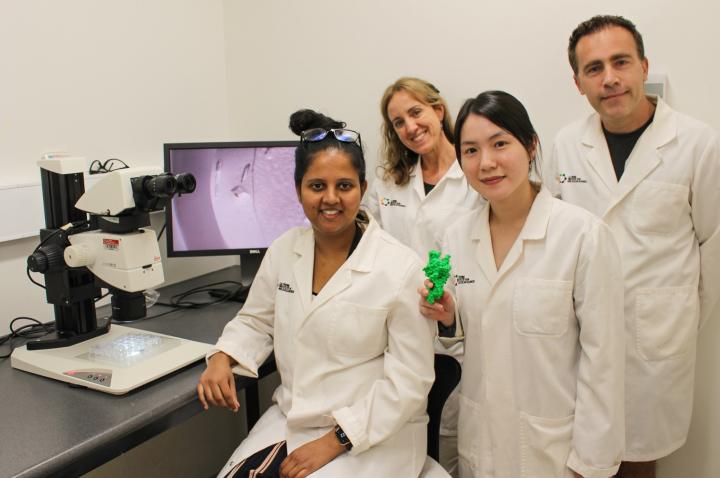

Published on the 25th April 2023 by ANSTO Staff
Key Points
-
La Trobe University scientists and international researchers have discovered how a bacterial toxin that causes human illnesses is capable of entering and killing a wide range of living cells
-
The team determined the molecular structure of the toxin within the bacteria Serratia marcescens
-
Structural information was acquired using the microfocus crystallography beamline at the Austalian Synchrotron
An international research team has discovered how a bacterial toxin, known as Ssp, is capable of entering and killing a wide range of living cells, including human cells using the Australian Synchrotron among other methods.
The team were able to see the molecular structure of the Ssp toxin from the bacterial pathogen Serratia marcescens. S. marcescens is remarkable in that apart from causing many human infections including respiratory diseases, as well as bloodstream and urinary tract infections, this pathogen is known to cause infections in livestock, insects and plants. In contrast, other pathogens have a more limited host range.
The finding, published in Nature Communications, could lead to the development of new antimicrobial treatments.
Researchers estimate that the structure of a new toxin class has not been determined in almost a decade.
Using the Microfocus crystallography beamline at the Australian Synchrotron, researchers at the La Trobe Institute for Molecular Science (LIMS) and the French National Research Institute for Agriculture, Food and Environment were able to see the molecular structure of the Ssp toxin from the bacterial pathogen Serratia marcescens.
Instrument scientist Dr Santosh Panjikar, who was a co-author on the paper, assisted with the experiments to gain structural information and data analysis.
"The structure determination of the Ssp protein was challenging because of crystallisation in the primitive space group. The anomalous signal from the semet protein crystals, which were non-isomorphous, was poor. More than ten datasets were collected but only two of them were useful. We were able to retrieve the phases and refine using our structure determination software, said Dr Panjikar.
Dr Jason Paxman, one of two lead researchers, said that Ssp is a new type of toxin and its design is quite unlike any others previously known to science.
“Pretend you've never seen a syringe before, but someone explains what a syringe does – injects substances into human tissue, then all of a sudden you have a picture of a syringe, and you see the plunger and needle – that's what this what we've done here,” Dr Paxman said.
“So now that we actually have the structure of the toxin, we can see how it injects itself into cells to cause disease, and then start designing ways to stop it.”
The environmental pathogen S. marcescens is remarkable, in that apart from causing many human infections including respiratory diseases, as well as bloodstream and urinary tract infections, this pathogen is known to cause infections in livestock, insects and plants. In contrast, other pathogens have a more limited host range.
With its wide host range, Serratia’s major toxin Ssp is able to enter and kill a wide range of living cells. Cell death caused by Ssp is responsible for the sickness associated with S. marcescens infections.
Professor Begoña Heras, Head of the Structural Biology and Bacterial Pathogenesis laboratory at LIMS, said by understanding what Ssp looks like we can now develop targeted inhibitors.
“These inhibitors or antimicrobials may be developed to bind to the part of Ssp responsible for injecting itself into cells,” Professor Heras said.
“Serratia has quite high levels of antibiotic resistance and can cause infections in a wide array of hosts, from humans to insects.”
New inhibitors of the Ssp toxin, could be used to ‘disarm’ S. marcescens and reduce the sickness during infections. This would circumvent the use of antibiotics.
The content has kindly been provided by La Trobe University.




